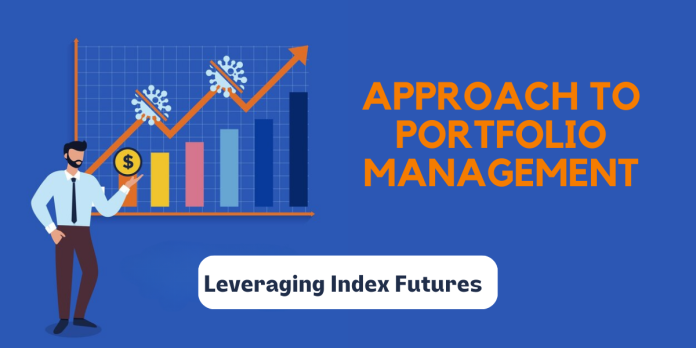Introduction:
In the dynamic world of stock trading, staying ahead of the curve and managing portfolio risk is paramount. Portfolio managers constantly seek ways to maximize returns while minimizing exposure to market volatility. One strategy that has gained prominence in recent years is the use of index futures to adjust a portfolio’s beta, a measure of its sensitivity to market movements. This blog will explore how portfolio managers can employ index futures to equitize cash and fine-tune their portfolios in a rising market. So, buckle up, traders, and let’s dive into the world of proactive portfolio management!
Equitising Cash: A Strategic Move
Picture this: you’re managing a portfolio with a substantial cash position, and your market analysis signals a forthcoming uptrend. Naturally, you’d think about investing that cash in stocks to capture potential gains, right? But here’s the kicker – individual stocks come with their own risks. Even in a bull market, certain stocks can underperform or flatline, putting your portfolio in jeopardy.
Read: Mastering Smart Portfolio Management Techniques
Why take that risk when you can opt for a more strategic approach? Enter equitising cash, a technique that allows you to align your portfolio with a benchmark index, especially when you anticipate an upward market trajectory. The key is to identify an index whose returns closely mirror those of your portfolio. For instance, if you primarily hold large-cap stocks, the Nifty Index can serve as your ideal benchmark.
The Art of Going Long on Index Futures
Here’s where the real action starts. You need to use futures contracts on your chosen benchmark index. Going long on these futures contracts will enable you to capitalize on your bullish outlook for the index in the short term.
Know: Difference between Portfolio Management vs Wealth Management
Let’s break it down further: Imagine your current portfolio beta is 1.05, but you aim to increase it to 1.25. To achieve this, you need to adjust your portfolio’s beta by 0.20, multiplied by the portfolio’s value. Dividing this product by the value of a Nifty futures contract will give you the number of contracts you should go long on. It’s crucial to note that this calculation assumes a one-to-one movement between index futures contracts and their underlying index. If there’s a variance, you must adjust the futures contract value by its beta.
Why Equitising Cash Trumps Other Strategies
Equitising cash is a strategic powerhouse for portfolio managers for several reasons. First, it involves lower slippage costs compared to purchasing individual stocks. When buying individual stocks, prices can surge before you complete your transactions, resulting in suboptimal entry points. In contrast, futures contracts allow you to establish equivalent spot positions with lower initial capital.
Additionally, consider the tax implications. If you’re implementing this strategy in your personal capacity, the short-term capital gains tax on equities is generally lower than the tax on derivatives. The latter is categorized as non-speculative business income and is taxed at your marginal tax rate.
Conclusion:
In the ever-evolving landscape of portfolio management, leveraging index futures to equitize cash and adjust portfolio beta is a strategy that can significantly enhance risk-adjusted returns. It provides portfolio managers with a proactive approach to aligning their portfolios with market movements, especially in rising markets. By going long on index futures, traders can capture market exposure while minimizing risks associated with individual stock selections. Moreover, with reduced slippage costs and potential tax benefits, equitising cash is a powerful tool that deserves a prominent place in any trader’s toolkit. So, next time you have a cash-heavy portfolio and a bullish outlook, consider this strategic move to position your investments for success.


